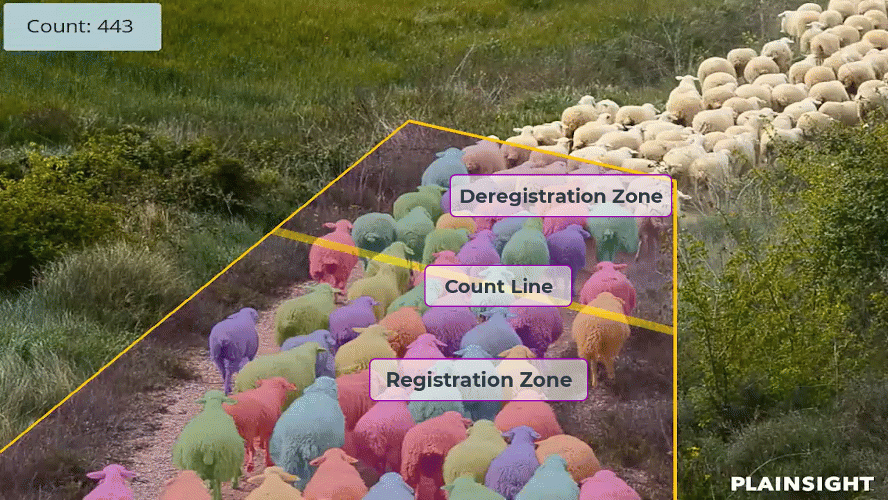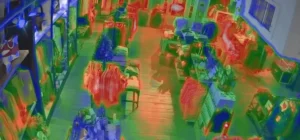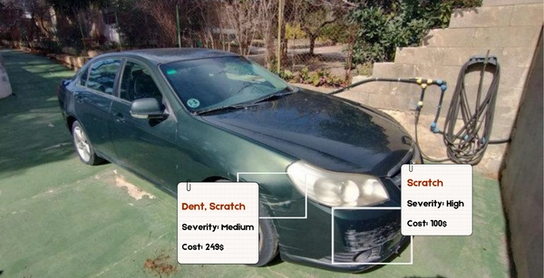
Top 20 Computer Vision Applications | Ultimate Guide
“The tools and technologies we’ve developed are the first few drops of water in the vast ocean of what AI can do”
Fe Fe Li, an American Computer Scientist
This post discusses the top 20 computer vision applications across all industries. Find the best computer vision idea for your AI project and explore the in-demand use cases in the market right now!
About Intellisense:
Intellisense Solution is a platform to provide customized Computer Vision solutions and AI services. Come on board to structure your company’s Big Data into valuable insights with our fully end-to-end deployed, scalable, and efficient Computer AI Vision solutions.
Get a Free Consultation Right Now!
What is Computer Vision?
Computer vision is a branch of artificial intelligence (AI) and computer science that seeks to allow machines to “see” and comprehend the visual world, making sense of images or videos in ways that are meaningful and useful for a variety of applications.
It entails creating algorithms and techniques that let computers comprehend and analyze visual input, much like the human visual system recognizes patterns, objects, scenes, and movements.
Let’s delve into the Top Computer Vision Applications and trace their evolution over time.
Evolution of Computer Vision:
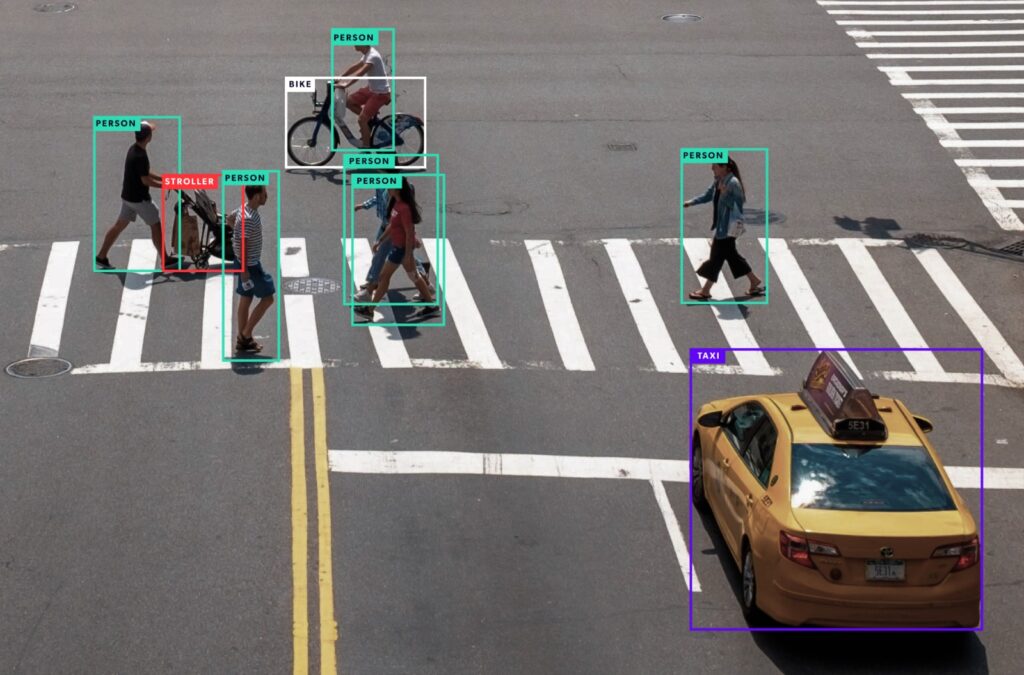
Today this field has applications in diverse areas such as image recognition, object detection, facial recognition, medical imaging, autonomous vehicles, surveillance systems, and augmented reality, among others.
But in the past, people began teaching computers to recognize simple objects like circles and squares using basic brain-inspired networks known as neural networks. By the 1970s, computers could distinguish between typed and handwritten text. As more photographs were available online, computers improved their ability to recognize faces. Computer vision is becoming a significant deal, with a market size of $20.31 billion! Looking ahead, it is expected to grow by $175.72 billion by 2032. This expansion occurred because we have a large amount of data to train computers, and our computers are now quite powerful. They use advanced techniques such as convolutional neural networks to do an excellent job of recognizing items; they are virtually always correct, with a 99% accuracy rate.
Top Computer Vision Applications In Different Industries:
Tasks related to computer vision, such as object detection, classification, recognition, and segmentation, are used in many applications that have shaped our world today.
Application of Computer Vision in Health Care:
Brain Tumor Detection:
Tumor detection is one of the top Computer vision Applications in healthcare, notably for medical imaging analysis. Computer vision systems use complex algorithms to reliably identify and analyze tumors in a variety of medical imaging modalities, including MRI, CT scans, and X-rays. These tools let healthcare practitioners detect tumors early, assess their characteristics, and design effective treatment procedures. By automating tumor detection methods, computer vision lowers human error, accelerates diagnosis, and improves patient outcomes through prompt interventions.
Hospital Hygiene Inspection:

Computer vision systems in hospitals help to maintain hygiene standards and prevent infections by analyzing video feeds to monitor hand-washing processes, PPE use, and room cleanliness. This technology provides a safe environment, decreases infection risks, and enables immediate corrective steps when deviations occur, thereby enhancing healthcare quality and safety.
Diabetes Detection:
Deep learning models in medical imaging, notably in ophthalmology, have revolutionized disease diagnosis and therapy, particularly in the detection of diabetic retinopathy from retinal pictures. These models use computer vision to detect indications such as microaneurysms and hemorrhages, enabling for earlier intervention and improving patient outcomes by reducing diabetic retinopathy-related vision loss.
Computer Vision In Agriculture:
Livestock Farming:
Computer vision Applications play a crucial role in monitoring and managing livestock health and behavior on farms. Using real-time video footage captured by cameras, sophisticated algorithms analyze data to detect signs of distress, illness, or abnormal behavior in animals. This technology enables farmers to receive timely alerts, leading to early disease detection, improved animal welfare, and enhanced productivity.
Crop Monitoring and Yield Estimation:
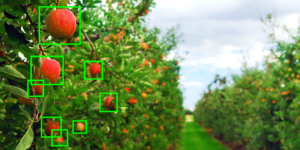
In agriculture, computer vision is instrumental in monitoring crop health, and growth, and estimating yield. Drones equipped with cameras capture high-resolution images of fields, which are then analyzed by algorithms to assess plant health, detect pests, and estimate crop yield. This precision agriculture approach helps in reducing resource wastage, increasing crop productivity, and facilitating better decision-making by farmers.
Fish Farming with Computer Vision:
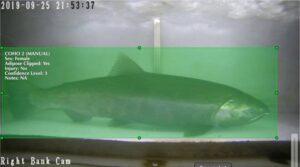
Aquaculture benefits significantly from computer vision technology for fish monitoring and management. Underwater cameras capture data on fish behavior, feeding patterns, and water quality. Advanced algorithms analyze this video data to track fish movement, assess their health, and detect anomalies. This aids farmers in optimizing feeding schedules, maintaining optimal water conditions, and ultimately ensuring sustainable and efficient fish farming practices.
Computer Vision in Restaurants
Enhanced Restaurant Management System:
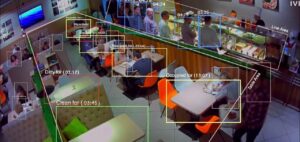
Implementing computer vision in restaurant management systems offers precise solutions for optimizing operations and enhancing guest experiences. By strategically placing cameras, the system tracks real-time table occupancy for efficient seating and turnover. It accurately monitors guest counts, aids in reservation management, and optimizes resource allocation.
Moreover, computer vision tracks orders, streamlining kitchen workflows and ensuring timely service. It also analyzes guest interactions with menus, providing insights for menu optimization and targeted promotions. This data-driven approach empowers businesses to make informed decisions, improve efficiency, and deliver exceptional dining experiences.
Quality Control:
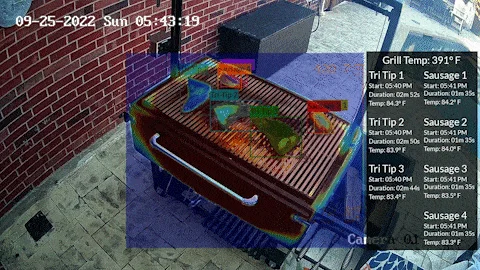
Restaurants rely heavily on computer vision technologies to maintain quality and client happiness. It automates food inspection by analyzing visual data from kitchen processes to ensure ingredient freshness, color, and early detection of errors, hence reducing waste. Furthermore, computer vision helps with plate presentation by ensuring that foods match visual standards before serving, and it plays an important role in allergen detection, which improves safety for diners with food allergies. Overall, computer vision improves quality control, minimizes waste, increases visual attractiveness, and protects diners’ safety in restaurant operations.
Drive-Thru Operations:
Computer vision technology in restaurants enhances drive-thru operations by monitoring lineups, calculating wait times, and guaranteeing order accuracy, resulting in increased operational efficiency and customer happiness. Furthermore, innovations such as license plate recognition offer personalized services and quicker payment processes, which improve the overall dining experience.
Hygiene and Safety Guideline Adherence:
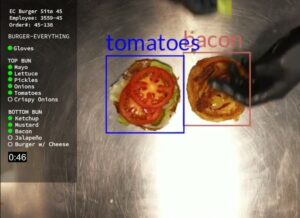
In restaurants, keeping hygiene and safety requirements is critical. Computer vision technology monitors hand washing compliance, delivers hygiene reminders, and detects increased body temperatures to diagnose illnesses. It also monitors food handling habits, alerting management to any inappropriate activities so that corrective steps can be implemented quickly. These technologies provide a safe and clean environment for both guests and personnel in restaurant environments.
Marketing and Consumer Interest Analysis:
Restaurant computer vision provides important insights into foot traffic, sentiment analysis, and menu optimization. It optimizes worker levels based on foot traffic statistics, enhances customer service, and assesses marketing efforts. Sentiment analysis allows for real-time tweaks to improve consumer happiness, while menu optimization customizes products to attract additional customers. These solutions improve operational efficiency and add to a more enjoyable eating experience overall.
Computer Vision in Shopping Malls:
Retail Heatmaps:
Retail heat maps at shopping malls use computer vision to track shopper movement, delivering useful insights to mall managers. These maps help to optimize store layouts, product placements, and staff management depending on crowd dynamics, so improving the shopping experience and maximizing space utilization.
Cashierless Stores:
Cashierless stores use computer vision to automate checkout, with sensors and cameras tracking things and allowing consumers to pick and leave without the need for traditional cashier interaction. This innovation increases productivity, lowers labor costs, and improves the shopping experience by reducing lines and offering a smooth route, making mall visits more enjoyable.
Image Recognition in Retail:
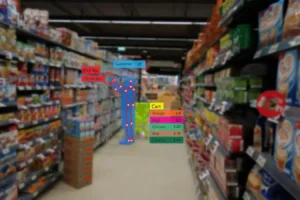
Image recognition technology at shopping malls transforms retail by allowing computers to precisely recognize products, logos, and labels. This computer vision system optimizes inventory management by providing real-time stock tracking and warnings for low or out-of-stock items, hence increasing customer satisfaction. It also helps with loss prevention by detecting theft and enhancing security in shopping malls. Overall, image recognition transforms retail processes, making shopping experiences more seamless and secure.
Virtual Mirrors and Dress Recommendations Engines:
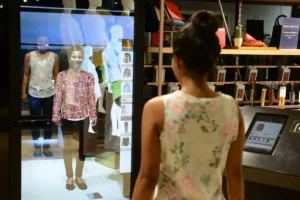
Shopping malls use innovative technologies, such as virtual mirrors driven by augmented reality and recommendation algorithms, to revolutionize the shopping experience. Virtual mirrors use computer vision to overlay clothing items, allowing for virtual try-ons, whereas recommendation engines tailor product recommendations to individual interests. These innovations improve engagement, raise conversion rates, and reduce returns, resulting in a more seamless and delightful buying experience.
Footfall Analysis, Pass-By Traffic, and Interactions:
Imagine you’re walking through a shopping mall, and some cameras track how many people pass by, where they stop, and how they interact with things like displays and promotions. This data helps mall managers understand which areas are the most popular, how effective their advertisements are, and how they can arrange the stores to boost sales. It’s like having a behind-the-scenes look at how people shop and what catches their eye, all to make the mall experience more engaging and profitable.
In-Store Advertisement:
Computer vision technology in shopping malls provides critical information by analyzing footfall, passing traffic, and interactions. It tracks customer mobility, engagement with displays, and response to promotions to help understand high-traffic areas and measure advertising performance. This data-driven approach improves decision-making, marketing strategies, and consumer experiences, making it a useful tool for mall management.
Computer Vision in Insurance:
Risk Assessment and Management:
Insurance companies use computer vision technologies to assess risks by analyzing visual data for new contracts and monitoring insured assets in real time for current contracts. It assesses property condition, location, and risks, as well as detecting changes such as damage or wear, resulting in increased risk assessment accuracy and early issue discovery, hence improving underwriting operations.
Claims Management and Fraud Detection:
Computer vision improves efficiency in claims management by analyzing visual data, estimating damages, and checking claim facts, resulting in speedier processing. It also helps with fraud detection by spotting irregularities in submissions, and lowering false claims and expenses while increasing claims adjudication efficiency.
Computer Vision in Security and Surveillance:
Intrusion Detection and Alerting:
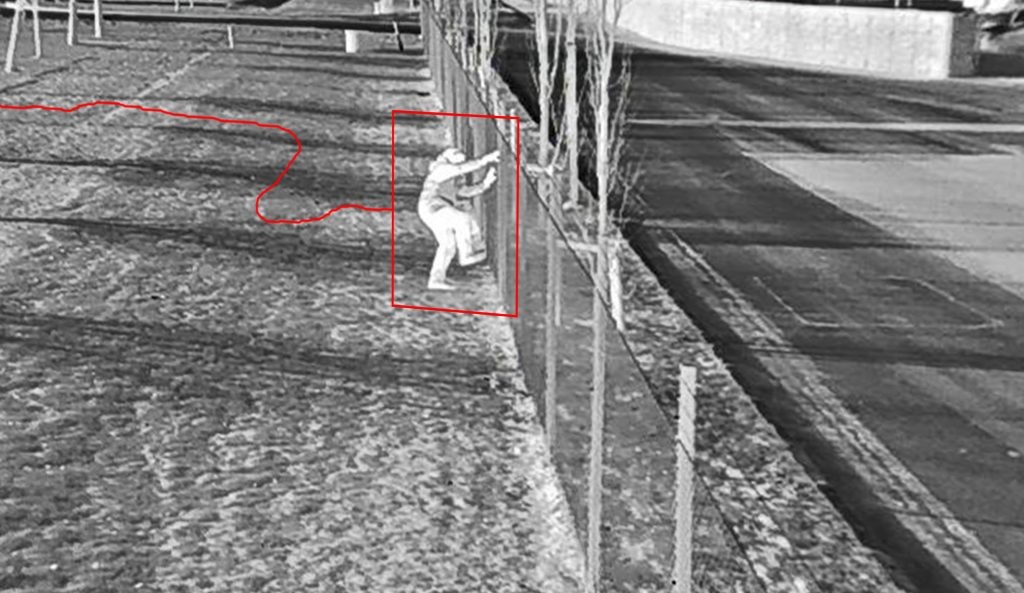
Warehouse computer vision systems detect unauthorized intrusions or suspicious activity by analyzing live video feeds and sending out fast notifications to allow for quick response. This improves warehouse security and gives business owners peace of mind by ensuring effective asset monitoring.
Facial Recognition for Access Control:
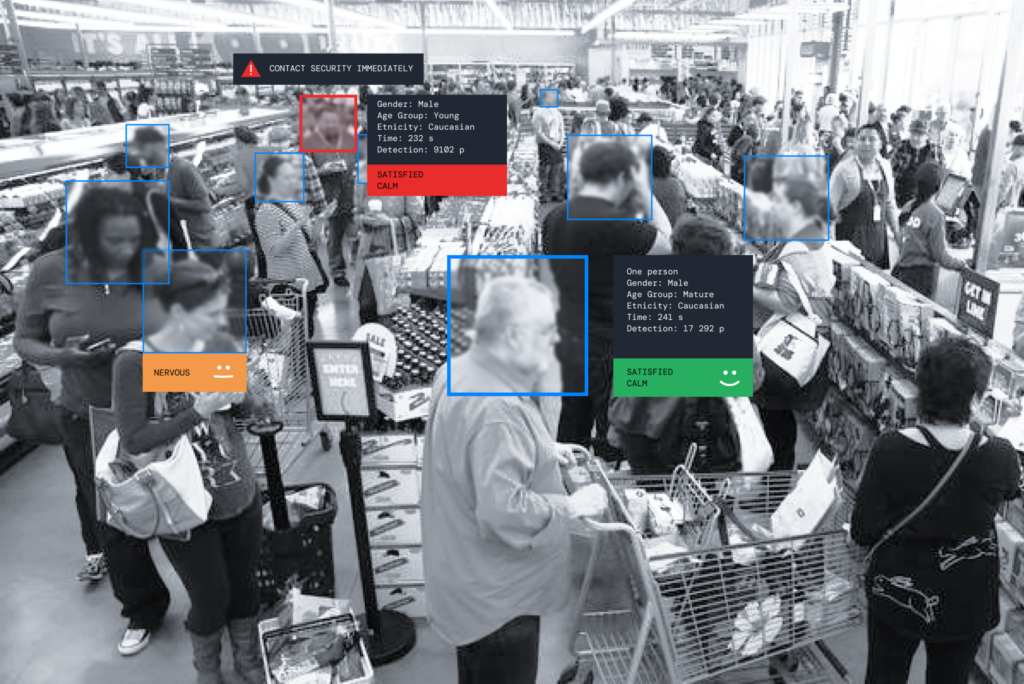
Facial recognition technology based on computer vision improves access control in high-security environments by validating identities in real time, lowering the danger of unauthorized access. This technology simplifies access procedures, eliminates the need for physical credentials, and improves overall security by detecting unidentified individuals.
Suspicious Activity Detection:
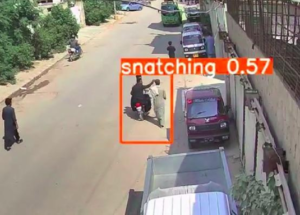
Computer vision technology is critical in detecting a wide range of anomalies, including theft, snatching, vandalism, accidents, and other suspicious actions. Computer vision systems can detect these irregularities in real-time by analyzing visual data using powerful algorithms and machine learning, allowing for rapid reactions and preventive security measures. This feature greatly improves safety and security across several environments, protecting assets, individuals, and properties from potential threats and risks.
Get a Free Consultation about Intellisense security and surveillance system!
Computer Vision in Education:
Automated Grading and Feedback:
Computer vision in education improves the grading process by automating the evaluation of assignments, quizzes, and exams. By examining scanned or digital submissions, computer vision algorithms may score responses, provide rapid feedback, and create thorough performance metrics for educators and students. This not only saves time for teachers but also provides consistent and objective grading, leading to enhanced learning results.
Enhanced Classroom Management:
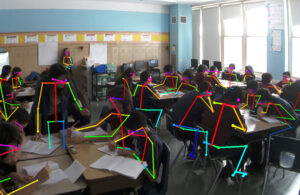
Computer vision technology helps classroom management by monitoring student attendance, behavior, and safety. Computer vision systems can track student presence, identify potential disruptions, and guarantee adherence to safety regulations by recognizing faces and detecting objects. This proactive monitoring fosters a positive learning environment, lowers administrative burdens, and increases overall classroom efficiency.
Conclusion:
As we conclude our Top Computer Vision Applications ‘s various use cases, it is evident that we are experiencing a revolution. From healthcare to almost every industry, technology is transforming sectors and improving our experiences. With AI driving innovation, we’re on an exciting journey to a future in which sight is the ultimate game changer. Prepare to enter a world of limitless possibilities and unbridled thrill with computer vision!
Get a Free Consultation of your project!

